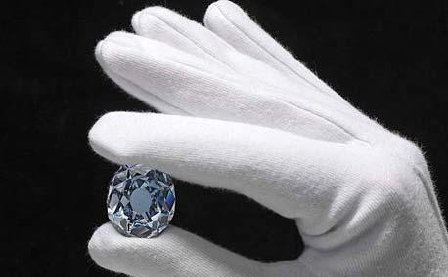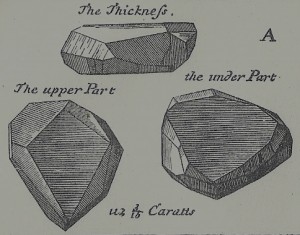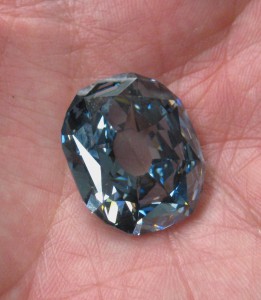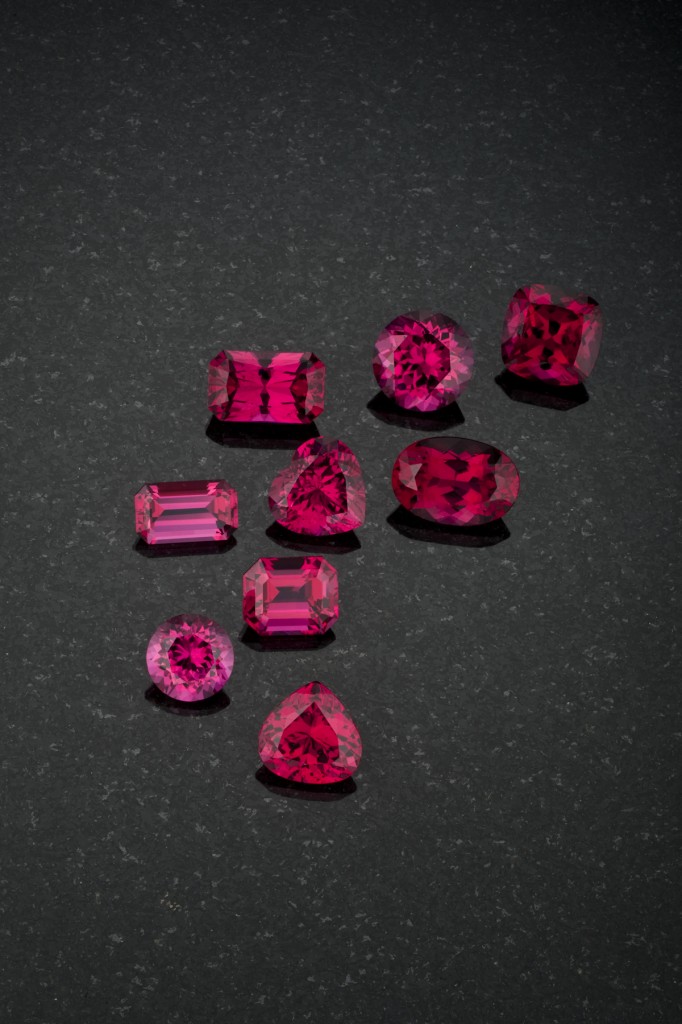
 The Legendary Blue-White Diamonds, Rarest of them All
The Legendary Blue-White Diamonds, Rarest of them All
by Richard W. Wise
©2007
Just recently it was my good fortune to examine one of the legendary diamonds of Golconda. These gems were originally mined in India in the 16th-18th Centuries. The mines were tapped out by about 1725. Many of the world’s most famous diamonds, including the Regent and the Sancy (pictured above right), The Hope and the Koh-i-Noor came from the mines of Golconda. This gem was accompanied by a GIA certificate rating it D Flawless, the highest possible diamond grade and a Gublin Laboratory certificate that identified the stone as a Type IIa. (Regent above left, Sancy above right)
As discussed in my previous post, recent scientific analysis has shown that diamonds with proven Golconda provenance are of a specific type of rare, pure carbon diamond known as Type IIa. Less than 1% of the world’s diamonds are Type IIa. Scientifically speaking, Type IIa diamonds are an almost pure carbon diamond containing no significant amount of nitrogen in the crystal lattice. Nitrogen is the impurity in diamond that imparts the yellowish hue. The lack of yellow makes for a pure colorless (D,E,F) color diamond. Some experts claim that all Golconda diamonds are Type II. There is, as far as I know, no scientific evidence to back up that claim.
Blue-White Beauty:
Golconda stones are the true blue white diamonds of legend. Today, dealers use the term blue white to describe diamonds that exhibit blue ultraviolet fluorescence. About 30% off all diamonds will exhibit this characteristic. Though ultra-violet fluorescence is not visible to the naked eye, though its effect may be. Blue is the complement of yellow, meaning that blue fluorescence in diamond effectively cancels out some of the yellow in the diamond’s body color. As a result, fluorescent diamonds will face up whiter than their actual color grade might suggest–a fluorescent H might look like a D color. It is UV fluorescence is also responsible for the super-charged saturation of very fine Burma-type rubies.
The gem I examined, a 9+ carat D-Flawless took on a distinct distinct bluish glow in direct sunlight. I had never seen this before. The blue glow was distinct and visible. Unable to believe my eyes I re-examined the certificate, it read: “no fluorescence”! I checked the stone myself, there was absolutely no fluorescence in either short or long-wave UV. How could this be?
Ian Balfour in his book, Famous Diamonds specifically mentions a “light blue tinge” as a characteristic of The 140 carat Regent Diamond. The Regent, originally called “The Pitt” was brought to England in 1670 and is, unquestionably, of Golconda origin (above left). Diamond scholar Herbert Tillander describes this affect as a “blue afterglow.” and notes that most Type II diamonds do not fluoresce. One exception, the Hope Diamond, a Type IIb (contains Boron) will not only fluoresce it will actually phosphoresce meaning that the stone will continue to glow last after the UV light source has been removed. Tillander further notes that some Type II diamonds have been found in South Africa’s Premier Mine, other sources mention Brazil.
Blue Haze:
Not all Type IIa diamonds exhibit this characteristic though Golconda stones do. I was able to examine another D-Flawless type IIa that placed side by side with the 9 carat, failed to exhibit the blue glow. In the Golconda stone, in direct sunlight, the blue hue floated above the gem like an early morning haze.
Fine Crystal; The 4th C:
Perhaps due to their pure carbon composition, Golconda diamonds exhibit another characteristic, a high degree of transparency, Balfour describes The Regent as having a “unique limpidity” that some dealers refer to as “super-d” or what I refer to in my book Secrets Of The Gem Trade, as a super-crystal. Very fine gems of all colors possess this characteristic. Compare a regular wine glass with one made of lead crystal, hold both up to the light and you will get the idea. When compared to another D color Type IIa not of Golconda origin, the difference was unmistakable. The characteristic strikes one as a combination of ultra-limpidity coupled with what connoisseurs refer to as “whiter than white” both characteristics were visible in the Golconda but not in the other gem.
The stone I examined was cut in a fashion almost identical to the Regent, a cut known as a baroque brilliant or old European (image left).  Stones cut in this fashion are of a different character than the modern brilliant. The crown is higher and the pavilion facets are shorter and broader.
Stones cut in this fashion are of a different character than the modern brilliant. The crown is higher and the pavilion facets are shorter and broader.
A fine diamond possesses two characteristics that define its beauty, brilliance and dispersion. Dispersion is the ability to break white light up into its constituent rainbow colors. In the single minded pursuit of maximum light return, modern brilliant cut gems have sacrificed dispersion to produce maximum brilliance. As a result they have become soul-less light return machines. A well cut baroque brilliant by contrast will exhibit a balance of brilliance and dispersion that gives the diamond its distinct character and beauty–a character that is missing in so many modern super-ideal cuts.
(image above, side view of Golconda diamond), Compare the color of the center with the side trillion that is definitely not of Golconda origin.
To summarize, there appear to be three visual characteristics that define the beauty of Golconda diamonds: A high degree of limpidity (crystal), an ultra-whiteness and a blue afterglow that appears in natural daylight. Golconda gems are Type IIa diamonds and this can be established by scientific testing. All Type IIa diamonds, however, are not Golconda diamonds; to be considered Golconda, they must possess the visual characteristics just described.
It is unclear whether Type IIa diamonds from other sources possess the characteristics discussed above, there certainly are some that do not. However, in the final analysis, we are interested in gems not geography. in gems beauty is the ultimate criterion. When it comes to Golconda diamonds if they deliver the goods, how much does source really matter.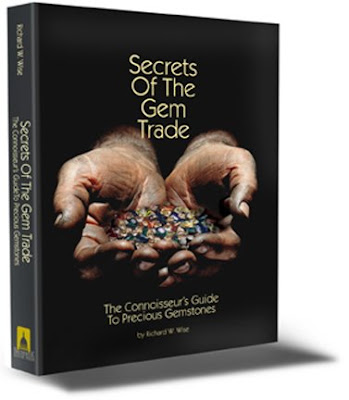
If you are interested in learning more about Golconda Diamonds or are simply looking for a new way to dazzle your friends at cocktail parties. Read more about the four Cs of connoisseurship. Follow me on gem buying adventures in the pearl farms of Tahiti. Visit the gem fields of Australia and Brazil. 120 carefully selected photographs showing examples of the highest quality gems to educate the eye, including the Rockefeller Sapphire and many more of the world’s most famous gems. Consider my book: Secrets Of The Gem Trade, The Connoisseur’s Guide To Precious Gemstones.
educate the eye, including the Rockefeller Sapphire and many more of the world’s most famous gems. Consider my book: Secrets Of The Gem Trade, The Connoisseur’s Guide To Precious Gemstones.
“Wise is a renowned author… He’s
done a marvelous job of this first book, monumental work, a tour de force…My recommendation: Buy this book”.
Charles Lewton-Brain, Orchid
Only $37.95. Read a couple of chapters online: www.secretsofthegemtrade.com.
Buy it on Amazon: www.amazon.com
“Secrets of the Gem Trade” subject of Ventfort Hall lecture
– July 30, 2007
Described by Gemkey Magazine as “one of the world’s foremost gem connoisseurs,” gemologist Richard W. Wise will bring his expertise to a Ventfort Hall Mansion and Gilded Age Museum visual presentation on Wednesday, August 29 at 4 p.m. A Victorian Tea will follow this final lecture of Ventfort Hall’s summer series.
Admission for the lecture and tea is $15 per person, members $12. For more information or reservations, please call 413-637-3206. Ventfort Hall is located at 104 Walker Street in Lenox.
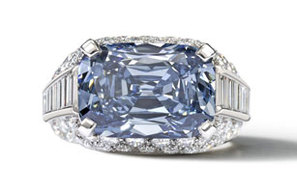 Fancy diamonds are back in the news, another auction record broken This time its blues. At Bonhams of London, a 5.30-carat fancy deep-blue diamond set a world auction record for price per carat when it sold for approximately $7.3 million, or $1.8 million per carat bettering the previous record of 1.68 million per carat. I recall a 5+ carat Fancy Deep blue emerald cut I viewed at the Las Vegas show some five years ago with an askiing price of 1 million per carat, quite a nice appreciation.
Fancy diamonds are back in the news, another auction record broken This time its blues. At Bonhams of London, a 5.30-carat fancy deep-blue diamond set a world auction record for price per carat when it sold for approximately $7.3 million, or $1.8 million per carat bettering the previous record of 1.68 million per carat. I recall a 5+ carat Fancy Deep blue emerald cut I viewed at the Las Vegas show some five years ago with an askiing price of 1 million per carat, quite a nice appreciation.
